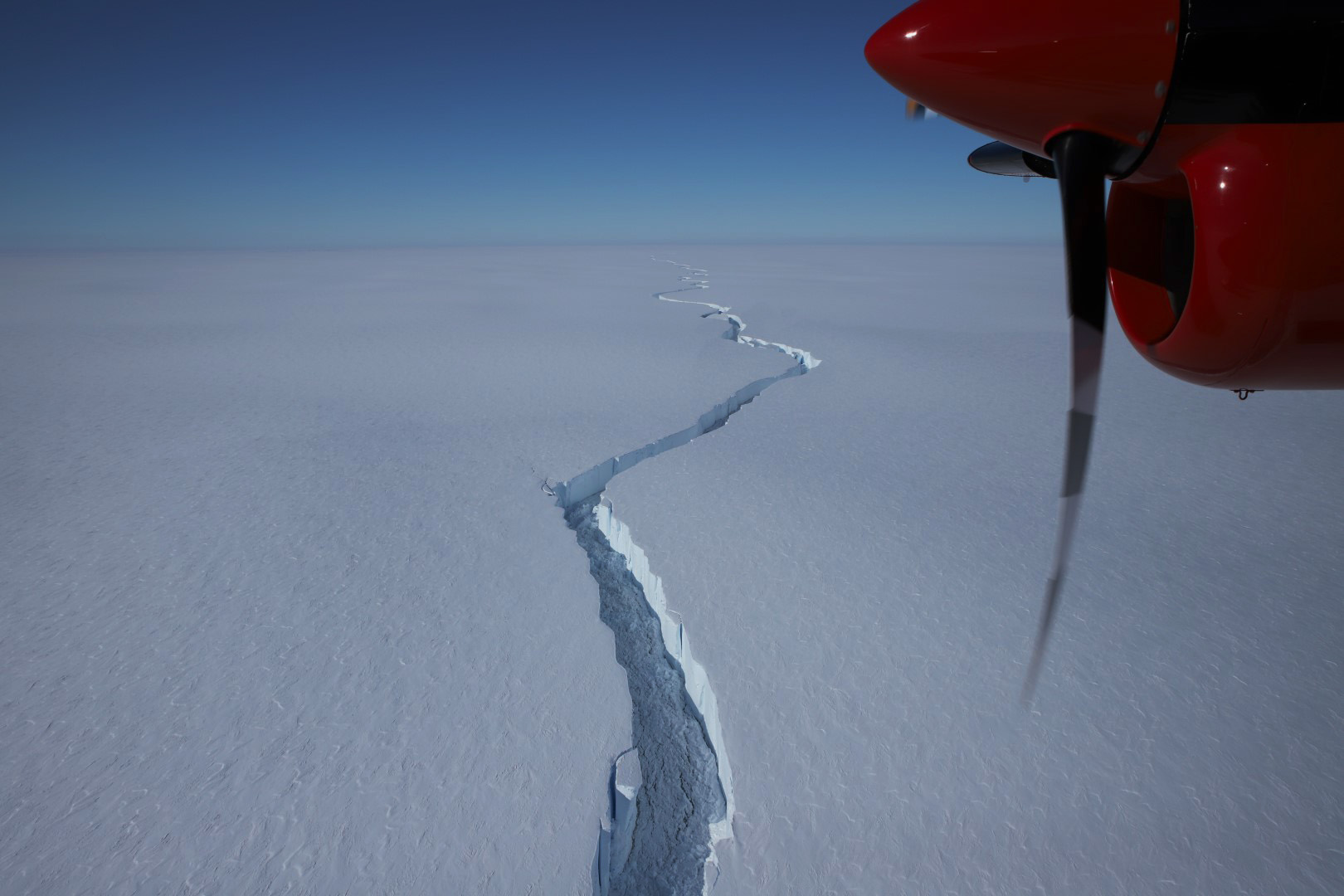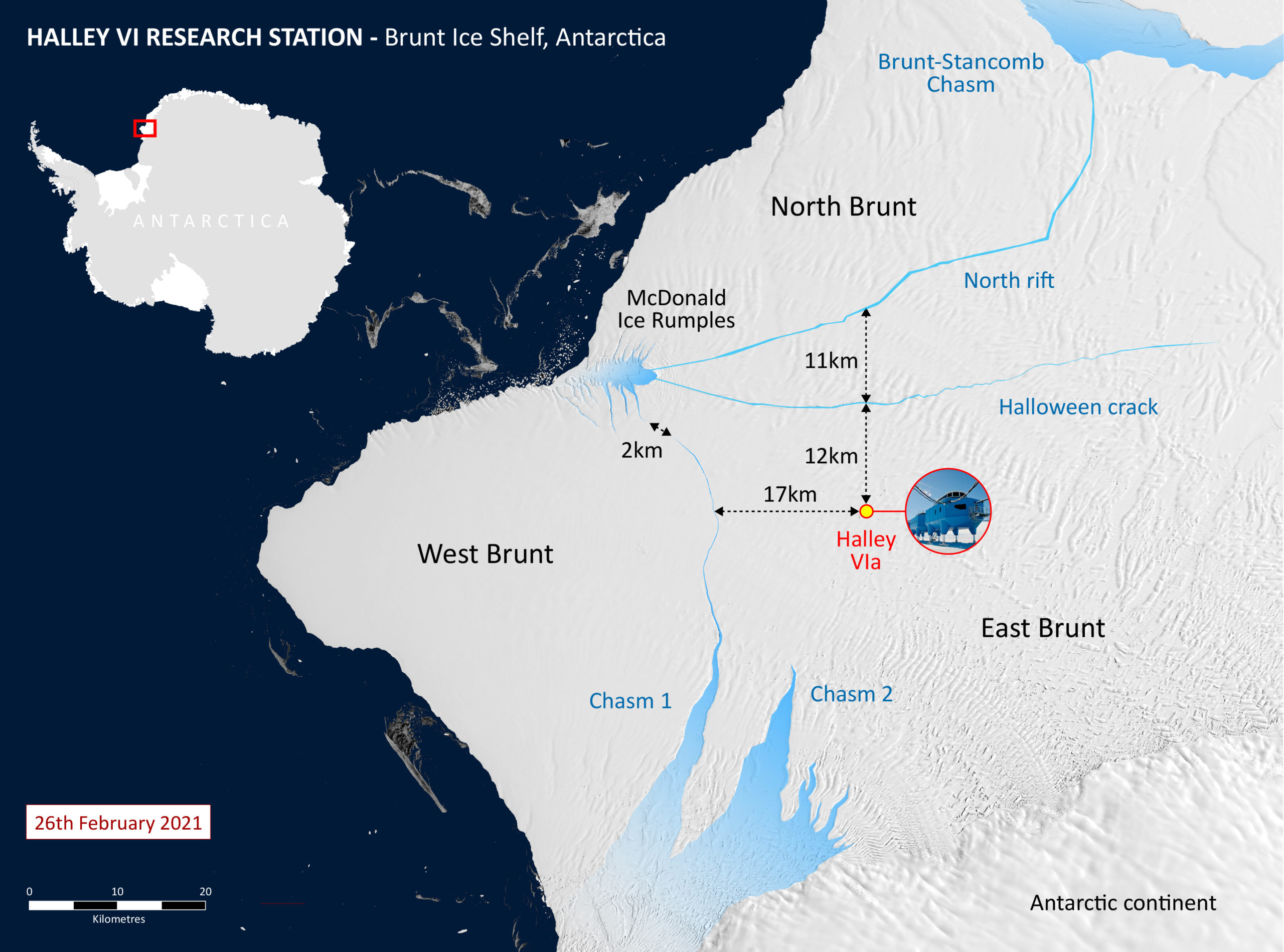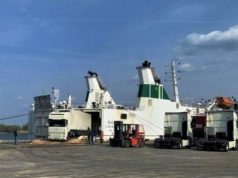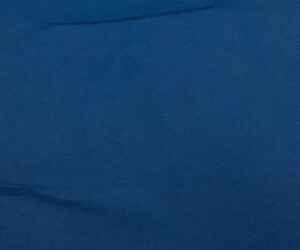A huge iceberg (1270 km²) the size of the county of Bedfordshire has broken off the 150-m thick Brunt Ice Shelf, almost a decade after scientists at British Antarctic Survey (BAS) first detected growth of vast cracks in the ice.
The Brunt Ice Shelf is the location of British Antarctic Survey’s (BAS) Halley Research Station. BAS glaciologists, who have been expecting a big calving event for at least a decade, say that the research station is unlikely to be affected by the current calving. The 12-person team working at the station left mid-February by BAS Twin Otter aircraft. The station is now closed for the Antarctic winter.

The first indication that a calving event was imminent came in November 2020 when a new chasm – called North Rift – headed towards another large chasm near the Stancomb-Wills Glacier Tongue 35 km away. North Rift is the third major crack through the ice shelf to become active in the last decade.
During January, this rift pushed northeast at up to 1 km per day, cutting through the 150-m thick floating ice shelf. The iceberg was formed when the crack widened several hundred metres in a few hours on the morning of 26th Feb, releasing it from the rest of floating ice shelf.

The glaciological structure of this vast floating ice shelf is complex, and the impact of ‘calving’ events is unpredictable. In 2016, BAS took the precaution of relocating Halley Research Station 32 km inland to avoid the paths of ‘Chasm 1’ and ‘Halloween Crack’.
Since 2017, staff have been deployed to the station only during the Antarctic summer, because during the dark winter months evacuation would be difficult. ‘Chasm 1’ and ‘Halloween Crack’ have not grown in the last 18 months.https://www.youtube.com/embed/QZ1URCgIxUM?feature=oembed&rel=0
Professor Dame Jane Francis, Director of British Antarctic Survey says:
“Our teams at BAS have been prepared for the calving of an iceberg from Brunt Ice Shelf for years. We monitor the ice shelf daily using an automated network of high-precision GPS instruments that surround the station, these measure how the ice shelf is deforming and moving. We also use satellite images from ESA, NASA and the German satellite TerraSAR-X. All the data are sent back to Cambridge for analysis, so we know what’s happening even in the Antarctic winter, when there are no staff on the station, it’s pitch black, and the temperature falls below minus 50 degrees C (or -58F).
“Over coming weeks or months, the iceberg may move away; or it could run aground and remain close to Brunt Ice Shelf. Halley Station is located inland of all the active chasms, on the part of the ice shelf that remains connected to the continent. Our network of GPS instruments will give us early warning if the calving of this iceberg causes changes in the ice around our station.”
Simon Garrod, Director of Operations at British Antarctic Survey adds:
“This is a dynamic situation. Four years ago we moved Halley Research Station inland to ensure that it would not be carried away when an iceberg eventually formed. That was a wise decision. Our job now is to keep a close eye on the situation and assess any potential impact of the present calving on the remaining ice shelf. We continuously review our contingency plans to ensure the safety of our staff, protect our research station, and maintain the delivery of the science we undertake at Halley.”







